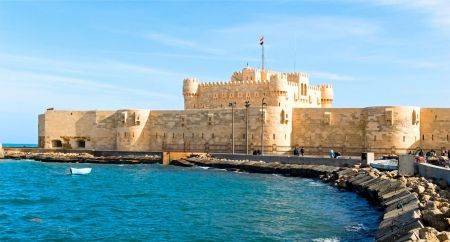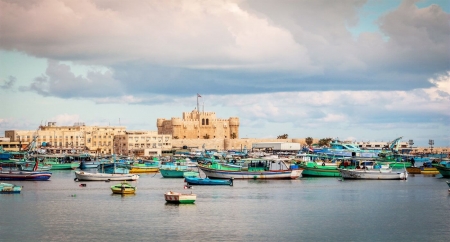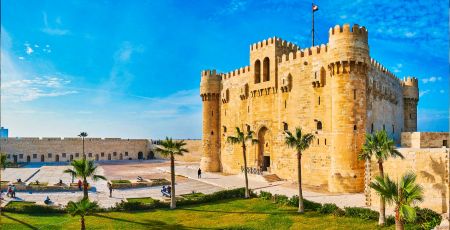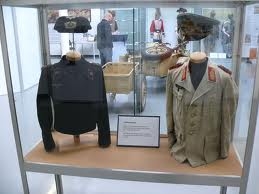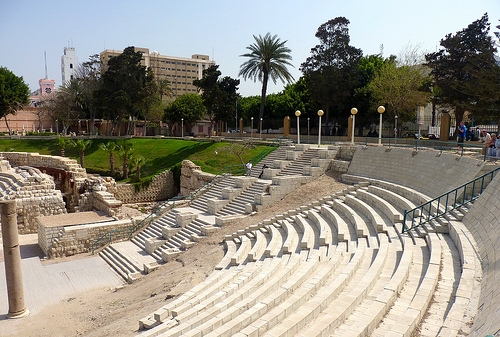Alexandria National Museum | Egypt
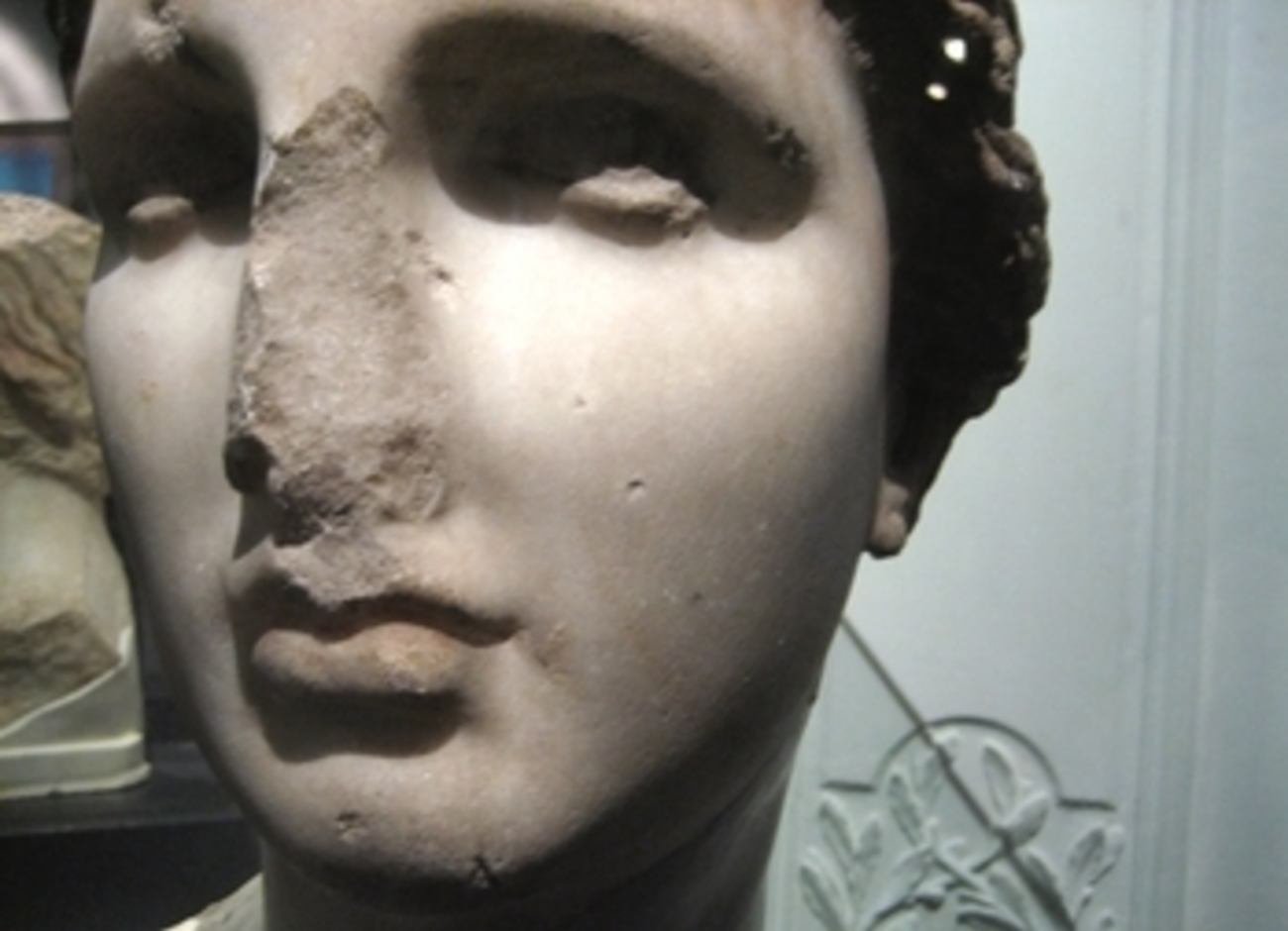
Alexandria National Museum
The National Museum of Alexandria which was formerly a palace, served as the meeting place for the royalties and merchant class hierarchy of Alexandria. The museum consists of 3 levels - the basement housing the Pharaonic artefacts, the ground level displaying the Graeco-Roman treasures, and the 1st floor - containing relics from Egypt's Coptic Christian and Islamic heritage, as well as some insight into the valuables left behind by King Farouk's family before the 1952 revolution.
The building is an Italian-style mansion built in 1928; and It is built in 1928 by Assad Basili Pasha, a wealthy merchant, can easily be recognised. It currently has 1800 artifacts. All the valuable objects are the narrators of the rich history of Alexandria and open chapters related to the Pharaonic, Roman, Coptic and the Islamic ages. The Alexandria National Museum covers a total area of 3,480 square meters and is built in the style of an Italian Mansion with four spacious floors. The museum is surrounded by a beautiful garden full of shady trees and flowering plants. Its freshly painted facade in shining white, with a semi-circular double stairway leading to elegant doorway, is clearly visible from the street. Alexandria National Museum is no exception. A hall in the basement has been transformed into an audio-visual workshop in which visitors can tour the museum via computer programmes that display each item from a variety of angles. Use has been made of every available space, even the grounds; the old garage for the American Consulate staff has been converted into a lecture hall and an open-air theatre for evening performances. Indeed, the grounds have already been used for one of the American University in Cairo Press's Book and Author receptions. - The construction work of the Alexandria National Museum started in 1926 and was officially inaugurated by the President of Egypt on 31st December, 2003.
The Alexandria National Museum covers a total area of 3,480 square meters and is built in the style of an Italian Mansion with four spacious floors. The museum is surrounded by a beautiful garden full of shady trees and flowering plants. - The National Museum which was formerly a palace, served as the meeting place for the royalties and merchant class hierarchy of Alexandria. Even the place has the prestige of being visited by the former Prime Ministers of Egypt. - The Alexandria National Museum currently has 1800 artifacts. All the valuable objects are the narrators of the rich history of Alexandria and open chapters related to the Pharaonic, Roman, Coptic and the Islamic ages. - The valuable exhibits at the Alexandria National Museum include a statue of the Roman emperor Hadrian, Female Pharaoh of Egypt, a collection of 162 gold and silver coins minted in Alexandria and other objects related to ritual offerings, utensils and expensive jewelry.
Customize Your Dream Vacation!
Get in touch with our local experts for an unforgettable journey.
Plan Your Trip
Mummies are also shown to the common public but in secret underground chambers. There are some other exhibits which were discovered during the underwater excavations and they too are displayed at the galleries of the Alexandria National Museum with the innumerable Greco Roman Artifacts. - New methods have been adopted in the display techniques of the exhibits. The National museum has been up dated with recent lighting systems for proper illumination of the objects, fire alarms and audio visual equipments. Alexandria National Museum in a 20th century mansion in central Alexandria is a state-of-the-art museum in which objects of all epochs are displayed in uniquely suspended showcasesThe section of the book on the founding of Alexandria is appropriate and interesting, It would, of course, have been an easy matter to strip the interior of the palace and re-design it to accommodate galleries suitable for the display of fine objects.
The objects on display are in diagonally-placed cabinets that do not detract from the elegant architectural features of the building. When one considers that many of the rooms in the palace were small, and that some 1,800 works of art were to go on display in a confined area, yet space must be allowed for free movement of visitors through narrow doorways, the enormity of the task can be realised. The chambers through which the cabinets pass are likewise lit to advantage, and a selected object or group of objects have been placed to enhance the interior design, along with accurate historical plaques. This museum provides an opportunity to compare religious traditions. Coptic items include icons of Jesus and the Virgin Mary and the Last Supper, as well as tombstones and clothing decorated with golden and silver crosses, while among the Islamic objects are a collection of 162 gold and silver coins minted in Alexandria.
The extravaganza of Egypt's former royal family is revealed in a collection of magnificent jewellery, bejewelled gold and silver awards, watches, crystal glasses and vases, not to mention gold-plated handbags, rings, necklaces and bracelets. Remember -- all are displayed in suspended cabinets so that they can be viewed from all sides. They are designed to stimulate cultural interest and historical continuity. Today no modern museum is complete without its high-tech restoration laboratory for antiquities and an electronic security system to preserve them, let us place high on the list the Alexandria National Museum, a beacon of culture.
- Book one of our Alexandria Excursions to visit the best attractions and tours.

